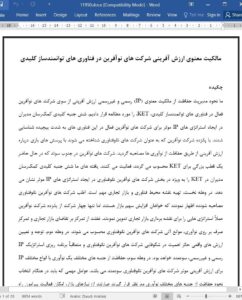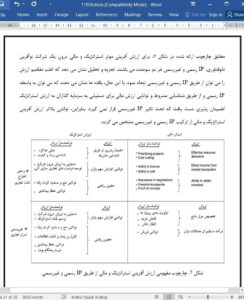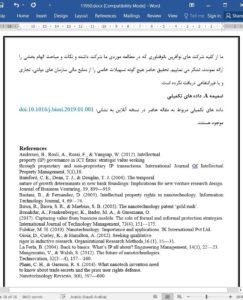Abstract
We have studied how start-up companies operating within key enabling technologies, KETs, manage formal and informal intellectual property (IP) protection for generating value. Six key aspects helping executives to create effective IP strategies for start-ups in these highly complex technologies have been identified. 15 start-ups defined as nanotechnology companies have been interviewed with open questions regarding value generated through protecting innovations. The start-ups operate in southern Sweden which currently is a KET heavy hub. Our findings indicate six key aspects to help executives within KETs, specially within the nanotechnology start-up sector, to create effective IP strategies. First, it is important to map the technological environment and the commercial market. Most of the interviewed nanotechnology start-ups expressed that they want to increase in market share however, only four out of fifteen start-ups actually had set strategies for mapping the commercial market. Neglecting to focus on commercial market demands and merely on the innovation itself can present a future hindrance for nanotechnology start-ups. Second, it is beneficial for nanotechnology start-ups to consider and determine which actual values are important in order for them to thrive, and thereafter strategically plan formal and informal IP accordingly. Third, protecting different aspects of an innovation with different types of IP is beneficial for nanotechnology start-ups to effectively generate value. Important factors to consider when choosing how to protect different aspects of innovations are, what the market needs, the possibility to work around the solution, as well as risk of reverse engineering the innovation. Fourth, due to the complexity within nanotechnology, start-ups may benefit from treating aspects of an innovation that are difficult to reverse engineer as trade secrets. Such aspects include e.g. know-how related to the production process and other underlying know-how which add to the product’s uniqueness but which not directly derivable from the product itself. Notably, only five out of fifteen nanotechnology start-ups have set strategies for how to manage their trade secrets. Fifth, to generate value, it is beneficial to formally protect aspects of an innovation that fulfill market demands as well as aspects that competitors likely would need to develop their products. Thus, aspects which are associated with sales arguments or which could form the basis for licensing agreements are beneficial to protect by patents for nanotechnology start-ups. All the studied nanotechnology start-ups have patents, but surprisingly only seven out of fifteen start-ups stated have patented aspects that generate commercial value on their market. Sixth, it is important for nanotechnology start-ups to have a plan for how the rights attained actually should generate value. This plan may encompass anything from how the rights support increased sales, form the basis for a licensing schedule, increase the value of the company, etc. The plan for how the rights should generate value is also the basis for a review procedure concerning whether to maintain a specific IP right or not.
Practical implications
In order for nanotechnology start-ups to create effective IP strategies the finding indicate six important aspects to consider in real business situations. The following six aspects were constructed through analyzing the identified value enablers to find similarities. By sorting out all value enablers, this recommendation can help executives within the nanotechnology start-up sector to create effective IP strategies and to effectively combine formal and informal IP to generate both strategic and financial values.
First, it is recommended to map the technological environment and the commercial market. Neglecting to focus on commercial market demands can be a future hindrance for nanotechnology start-ups when trying to create effective IP strategies. Important factors to consider when choosing how to protect different aspects of innovations are, whatthe market needs, the possibility to work around the solution, as well as risk of reverse engineering the innovation. When IP strategies are created in accordance to the technological and commercial mapping, nanotechnology start-ups can attain freedom to operate the market and have the ability to hinder and block competitors.











